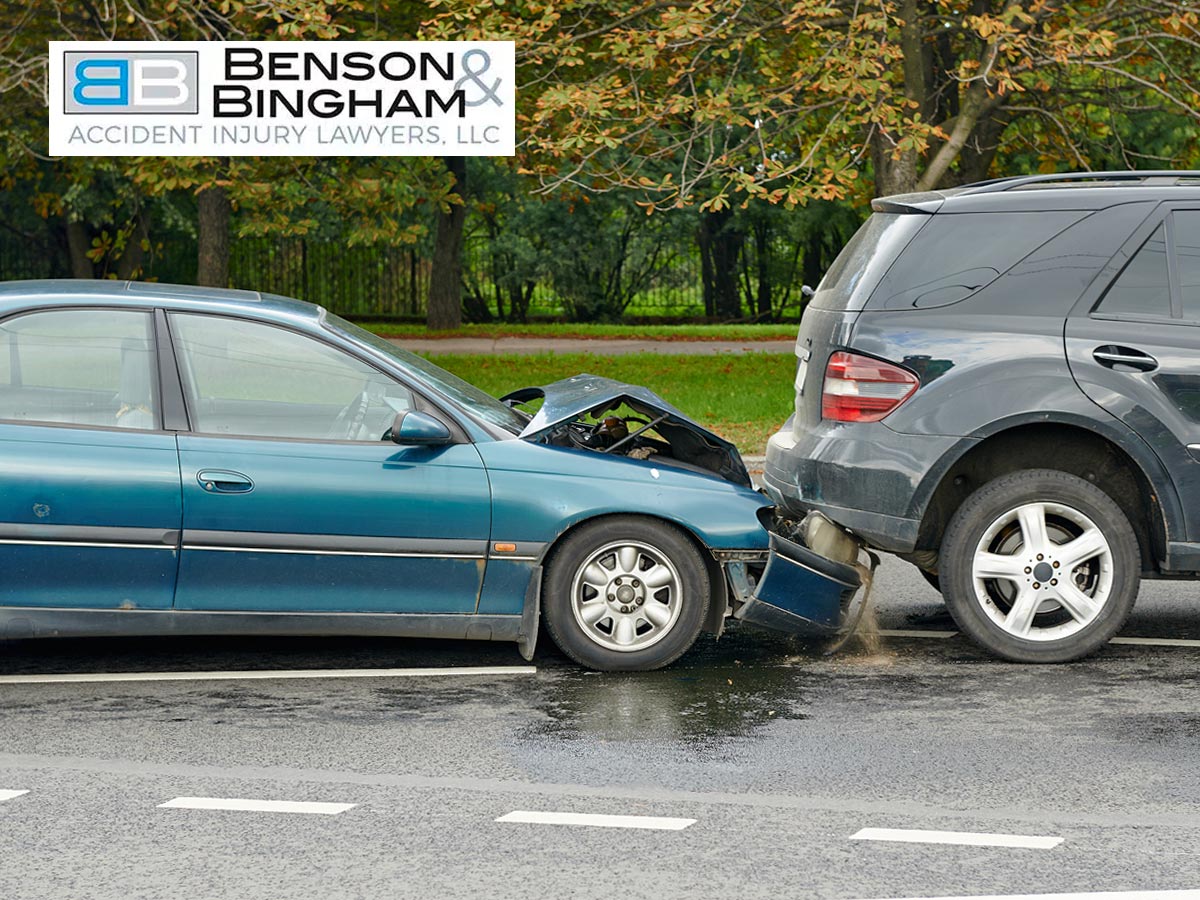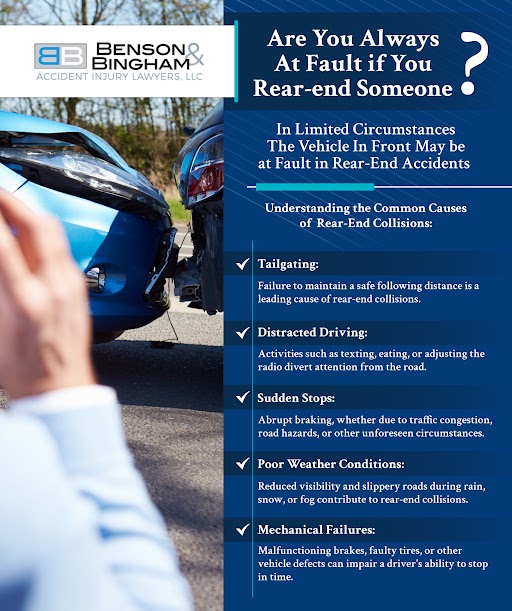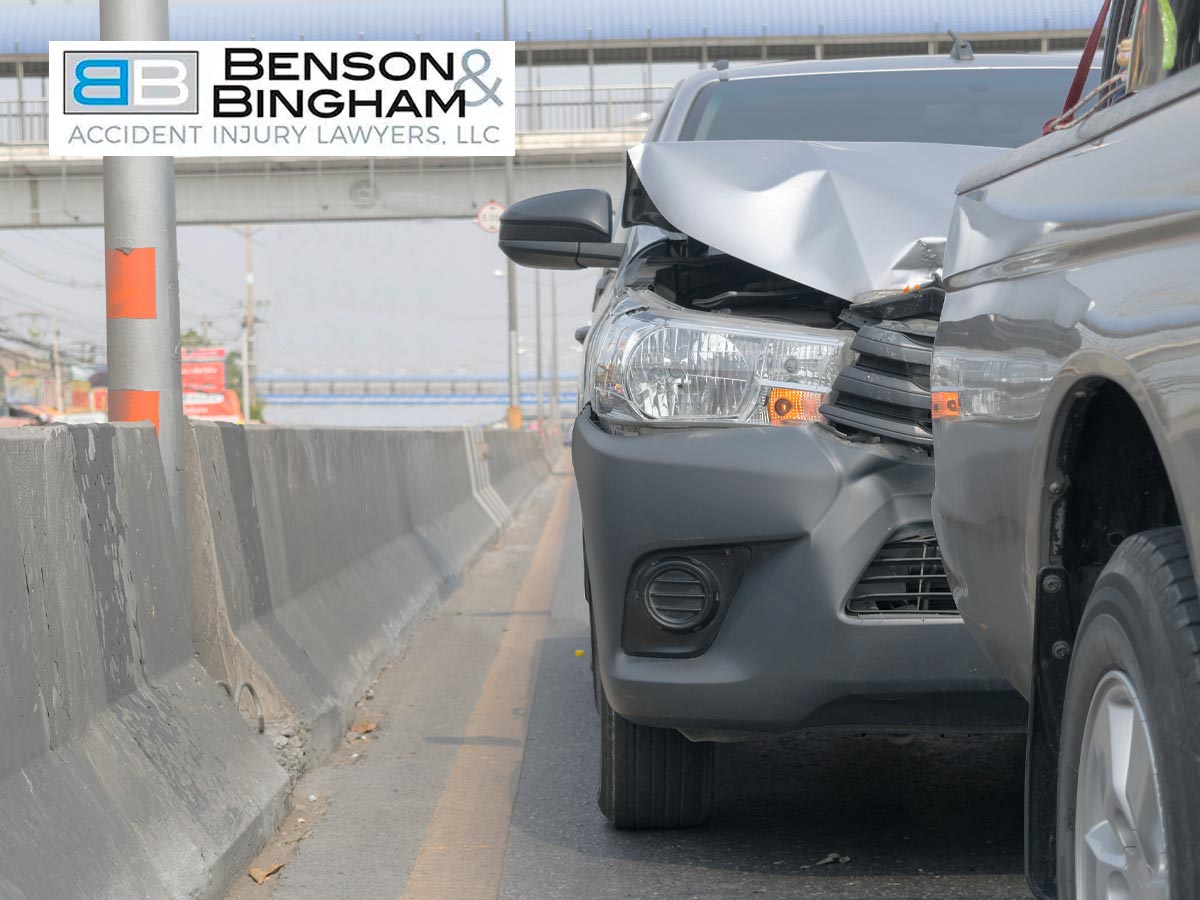In Limited Circumstances The Vehicle In Front May be at Fault in Rear-End Accidents

Understanding the Common Causes of Rear-End Collisions:

Rear-end collisions are often the result of various factors that compromise road safety and driver awareness. Understanding the common causes behind these accidents is crucial for promoting safer driving practices and reducing the risk of collisions. Below are some key factors contributing to rear-end collisions:
Tailgating: Failure to maintain a safe following distance is a leading cause of rear-end collisions, as it reduces reaction time and increases the risk of collision.
Distracted Driving: Activities such as texting, eating, or adjusting the radio divert attention from the road, impairing a driver’s ability to react to sudden stops.
Sudden Stops: Abrupt braking, whether due to traffic congestion, road hazards, or other unforeseen circumstances, can catch following drivers off guard.
Poor Weather Conditions: Reduced visibility and slippery roads during rain, snow, or fog contribute to rear-end collisions, especially if drivers fail to adjust their speed accordingly.
Mechanical Failures: Malfunctioning brakes, faulty tires, or other vehicle defects can impair a driver’s ability to stop in time, increasing the risk of rear-end accidents.
When the Lead Driver Is at Fault for a Rear-End Collision
Determining fault in a rear-end collision is not automatic, as many people think. Several scenarios can mean that the front driver is at fault in a rear-end crash.
There are four common scenarios when this is the case:
- When a driver pulls too far into an intersection, then backs up to get out of the way of opposing traffic, they may collide with the car behind them. Because it is not reasonable to expect the rear driver to know the front driver is going to back up, the rear driver cannot be expected to get out of the way. Instead, the driver in front must watch what they do.
- When the front driver drives aggressively, including sudden braking when it is not necessary and erratic lane changes, that person could be at fault if their erratic driving causes a rear-end wreck. Drunk drivers, drivers exhibiting road rage, and those who intentionally try to get hit may also be liable for accident injuries in a rear-end crash they cause.
- If the front driver’s vehicle does not have functioning brake lights, the front driver may be at fault for a rear-end wreck.
- If the front driver’s vehicle stopped due to hitting another vehicle in front of it causing a pile-up. Typically, it’s the second car in the pile up that is found at fault for causing the accident.
When the driver in front brakes suddenly, they may be at fault for the accident, but only if the rear car was following at a reasonable distance. Nevada laws only state that a driver “shall not follow another vehicle more closely than is reasonable” but does not define reasonable.
Liability Considerations in Rear-End Collisions:
Understanding liability in rear-end collisions involves a nuanced assessment of various factors that contribute to the sequence of events leading to the accident. While the rear driver is commonly presumed at fault, there exist exceptions and mitigating factors that can alter the distribution of liability:
Presumed Liability:
In the majority of cases, the rear driver is automatically presumed to be at fault for failing to maintain a safe following distance or react appropriately to the actions of the lead vehicle. This presumption stems from the legal expectation that drivers must maintain a safe distance to avoid collisions.
Exceptions and Mitigating Factors:
a. Lead Driver’s Negligence:
The front driver may share or bear full responsibility if they engage in reckless driving behaviors, such as sudden lane changes, aggressive maneuvers, or driving with malfunctioning brake lights. In such instances, the actions of the lead driver directly contribute to the occurrence of the rear-end collision, shifting or sharing liability accordingly.
b. Shared Liability:
External factors beyond the control of either driver, such as adverse road conditions, pedestrian actions, or the actions of other vehicles, may contribute to or entirely cause a rear-end collision. In such cases, liability may be apportioned among multiple parties based on their respective degrees of responsibility.
c. Comparative Negligence:
Nevada follows a comparative negligence system, allowing fault to be apportioned between multiple parties based on their respective degrees of responsibility. This legal framework enables a more equitable distribution of liability, considering the actions and behaviors of all parties involved in the accident.
Crucial Factors When Determining Fault in a Rear-End Accident:
In assessing fault in rear-end collisions, several factors are considered, each contributing to the overall determination of liability:
Distance Between Vehicles:
Following too closely violates traffic laws and indicates negligence on the part of the rear driver, particularly if it contributed to the collision. The proximity between vehicles at the time of the accident is a critical factor in assessing fault.
Speed of Vehicles:
Excessive speed reduces stopping distance, increasing the likelihood of rear-end collisions and potentially shifting liability towards the speeding driver. The velocity of both vehicles involved in the accident is evaluated to determine whether it played a role in the collision.
Road Conditions:
Adverse road conditions, such as wet or icy surfaces, require increased stopping distances, and failure to adjust speed accordingly can contribute to accidents. The state of the road at the time of the collision is examined to ascertain whether it influenced the ability of drivers to avoid the accident.
Driver Behavior:
Erratic driving behaviors, such as sudden lane changes, aggressive maneuvers, or distracted driving, may shift liability to the driver engaging in such actions. The actions and decisions of each driver leading up to the collision are scrutinized to determine whether they contributed to the accident.
Brake Light Functionality:
Functional brake lights are essential for signaling intentions to stop, and their absence can affect fault determination, particularly if they contribute to the collision. The functionality of brake lights on both vehicles involved in the accident is assessed to ascertain whether they played a role in the collision.
Common Injuries Resulting from Rear-End Collisions:
Rear-end collisions can inflict a range of injuries on individuals involved in the accident, varying in severity and long-term impact. Understanding these common injuries is crucial for assessing the full extent of harm and pursuing appropriate medical treatment and compensation:
Whiplash:
One of the most frequently reported injuries in rear-end collisions, whiplash occurs when the sudden jolt of impact causes the head to jerk forward and backward rapidly. This motion can strain or sprain the neck muscles, leading to symptoms such as pain, stiffness, and restricted movement. While whiplash injuries are often considered minor, they can result in significant discomfort and may require prolonged recovery periods.
Head and Brain Injuries:
The force of impact in rear-end collisions can cause the head to strike against various interior surfaces of the vehicle, such as the steering wheel, dashboard, or headrest. This can result in concussions or traumatic brain injuries (TBIs), which may range from mild to severe. Symptoms of head and brain injuries can include headaches, dizziness, confusion, loss of consciousness, and cognitive impairments. Depending on the severity of the injury, individuals may experience long-term consequences that impact their daily functioning and quality of life.
Spinal Cord Injuries:
Compression or damage to the spinal cord in rear-end collisions can have devastating consequences, potentially leading to paralysis or long-term disability. Injuries to the spinal cord may result from the force of impact or from the sudden movement of the body during the collision. Symptoms can vary depending on the location and severity of the injury but may include loss of sensation, motor function, and bowel or bladder control. Spinal cord injuries often require intensive medical intervention and long-term rehabilitation to maximize recovery outcomes.
Soft Tissue Injuries:
The sudden impact of a rear-end collision can cause bruises, strains, or tears in the muscles, ligaments, or tendons of the body. Soft tissue injuries may occur in various areas, including the neck, back, shoulders, and limbs. Symptoms can include pain, swelling, tenderness, and reduced range of motion. While soft tissue injuries are generally considered less severe than fractures or spinal cord injuries, they can still result in significant discomfort and may require medical intervention, such as physical therapy or chiropractic care, to facilitate healing and recovery.
Fractures and Broken Bones:
The force exerted on the body during a rear-end collision can lead to fractures or broken bones in the arms, legs, ribs, or skull. These injuries may occur upon impact with interior surfaces of the vehicle or as a result of the body being thrown against objects within the car. Fractures and broken bones can cause intense pain, swelling, deformity, and functional impairment. Treatment typically involves immobilization, surgical intervention, and rehabilitation to promote proper healing and restore functionality.
The Most Important Steps to Take When You Get Rear-Ended:
Contact Authorities: It’s crucial to notify law enforcement about the accident. Call emergency services to report the collision and request medical assistance if anyone is injured. Having an official record of the incident created by law enforcement can be valuable for insurance claims and legal proceedings.
Document Evidence: Documenting the accident scene is essential for insurance claims and legal purposes. Take photographs of the accident scene from multiple angles, capturing vehicle damage, skid marks, road conditions, and any relevant traffic signs or signals. Document any visible injuries sustained by yourself or passengers.
Seek Medical Attention: Even if injuries appear minor initially, it’s crucial to seek medical evaluation and treatment promptly. Some injuries, such as whiplash or internal trauma, may not manifest symptoms immediately but can worsen over time. Seeking medical attention promptly not only ensures your health and well-being but also documents the extent of injuries for insurance claims.
Do I Need a Car Accident Attorney If I Believe the Rear-End Collision Was Not My Fault?
Yes. Even if the police report states that you were not at fault, the other driver’s insurance company is going to try to poke all kinds of holes in that assertion. An attorney can help you prove that the accident was not your fault and that the police officer who wrote the report interpreted the accident scene correctly. If the at-fault driver and/or their insurance company continues on the same path of reassigning blame, your accident lawyer can help with investigating the accident to prove that you were not at fault.
Collecting Compensation for Accident-Related Injuries

If your attorney can prove that you were not at fault for your rear-end collision, you may collect compensation for your accident-related injuries and other losses from the at-fault party. There are three categories of compensation, called damages, available to accident victims who make a successful claim against the at-fault party’s insurance company or in court.
These categories are:
- Economic damages: This category of damages includes medical expenses, lost wages, property damage, and other losses that have a clear economic value. If the victim has serious injuries that will require long-term treatment, they can request estimated future medical expenses and lost wages, as well.
- Non-economic damages: This category of damages provides compensation for less tangible losses, such as physical or emotional pain and suffering, loss of enjoyment if the victim can no longer participate in activities they once enjoyed, and other emotional or personal disruption to the victim’s life because of the injury.
- Punitive damages: When the at-fault party’s behavior was particularly egregious, the victim can sometimes obtain punitive damages. These are rare, but courts can award them to punish the at-fault driver—if they crashed while driving drunk, for example.
A car accident lawyer in Vegas can help you determine whether you or someone else bears liability for an accident, and what compensation you should
Navigating the Aftermath of Rear-End Collisions with Benson & Bingham Accident Injury Lawyer, LLC
Rear-end collisions pose significant risks to both physical and mental well-being, often resulting in a range of injuries and emotional trauma for those involved. Understanding the causes, liability considerations, common injuries, and avenues for compensation is essential for navigating the aftermath of such accidents effectively. At Benson & Bingham Accident Injury Lawyer, LLC, we recognize the complexities of rear-end collisions and are dedicated to providing expert legal guidance and advocacy to accident victims in Nevada. Our team is committed to fighting for the rights of our clients, ensuring they receive the compensation and support they deserve as they recover from their injuries and move forward with their lives. If you or a loved one has been involved in a rear-end collision, don’t hesitate to contact us for a consultation. We’re here to help you every step of the way.
In rare instances, the vehicle in front may be at fault, such as when there are sudden, unnecessary stops or when the vehicle lacks functioning brake lights. However, these scenarios are exceptions and not the norm.


